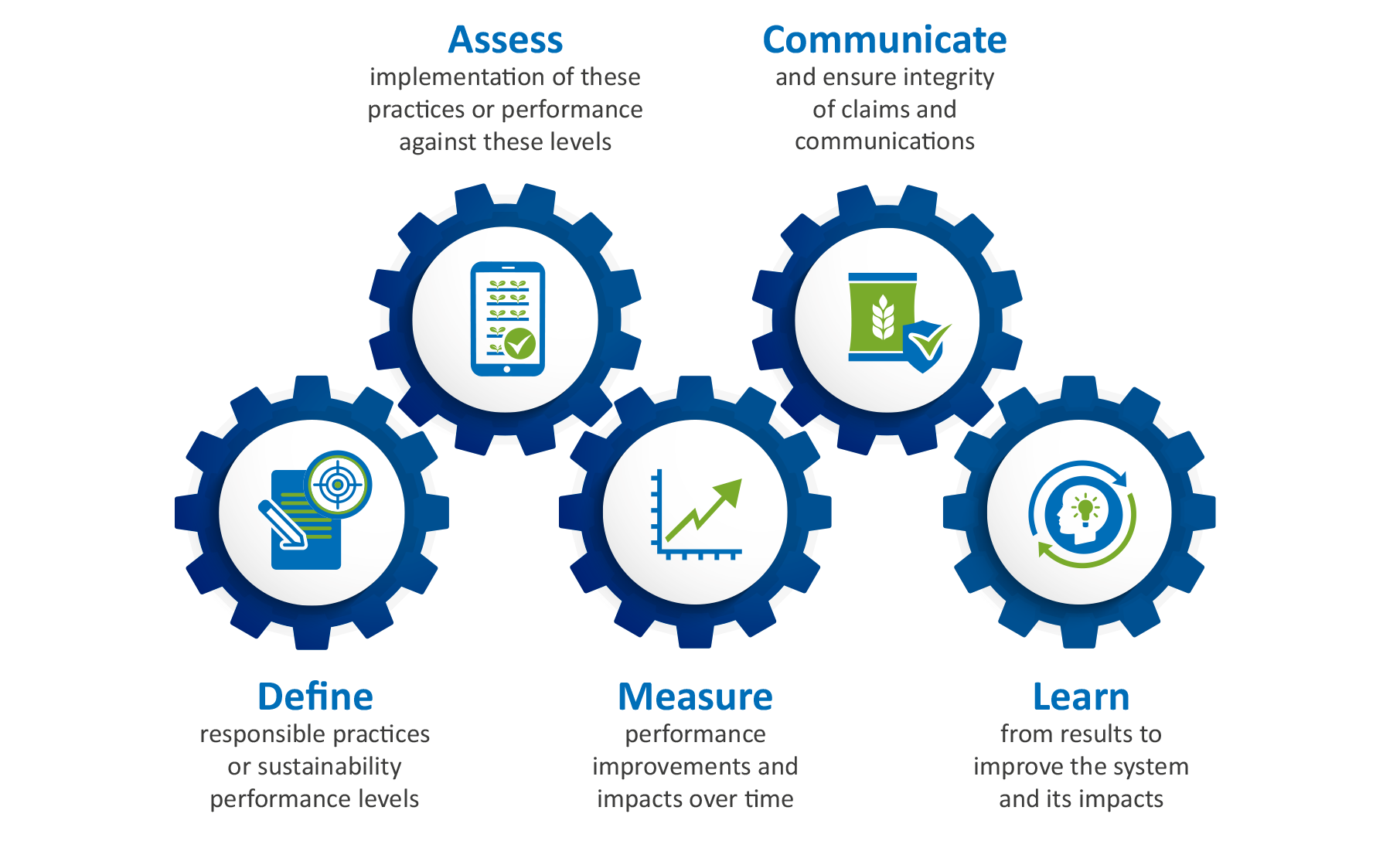What is a sustainability system?
Sustainability systems are market-based tools designed to address the most pressing social and environmental challenges of our time. They define responsible practices, assess the implementation of these practices, and measure and communicate results. Sustainability systems are used in most sectors worldwide to improve social and environmental performance.
The term ‘sustainability systems’ refers to a range of organisations and approaches that have common elements: they define sustainability performance levels or improvement pathways; they measure, monitor, or verify performance or progress; and they allow for claims and communications. These elements work together to connect consumers and producers and use the power of the market to support sustainability improvements.
Sustainability systems enable the recognition of good performance and sustainability improvement and provide needed confidence to regulators, investors, businesses and consumers.
Core elements of a sustainability system

Some of the earliest sustainability systems were standards and certification organisations such as Forest Stewardship Council, Rainforest Alliance, Fairtrade International and the Marine Stewardship Council. New and emerging sustainability systems include improvement programmes, sustainability ranking initiatives, and landscape and jurisdictional approaches. Many sustainability systems focus on commodities and products. Some newer systems certify companies, corporate strategies and initiatives, or projects and interventions.
Sustainability systems are expanding the range of strategies they use to achieve the impact goals embedded in their missions. More and more, their strategies focus on tackling the wider conditions that enable sustainable production, often addressing the particular challenges of smallholders and SMEs. For example, these wider strategies include: community development and capacity building programmes, through partnerships with local extension services, NGOs and other service providers; market development and market linkages to improve access for producers; stakeholder coordination at local, national or landscape level; and policy advocacy, both at a national and international level.
